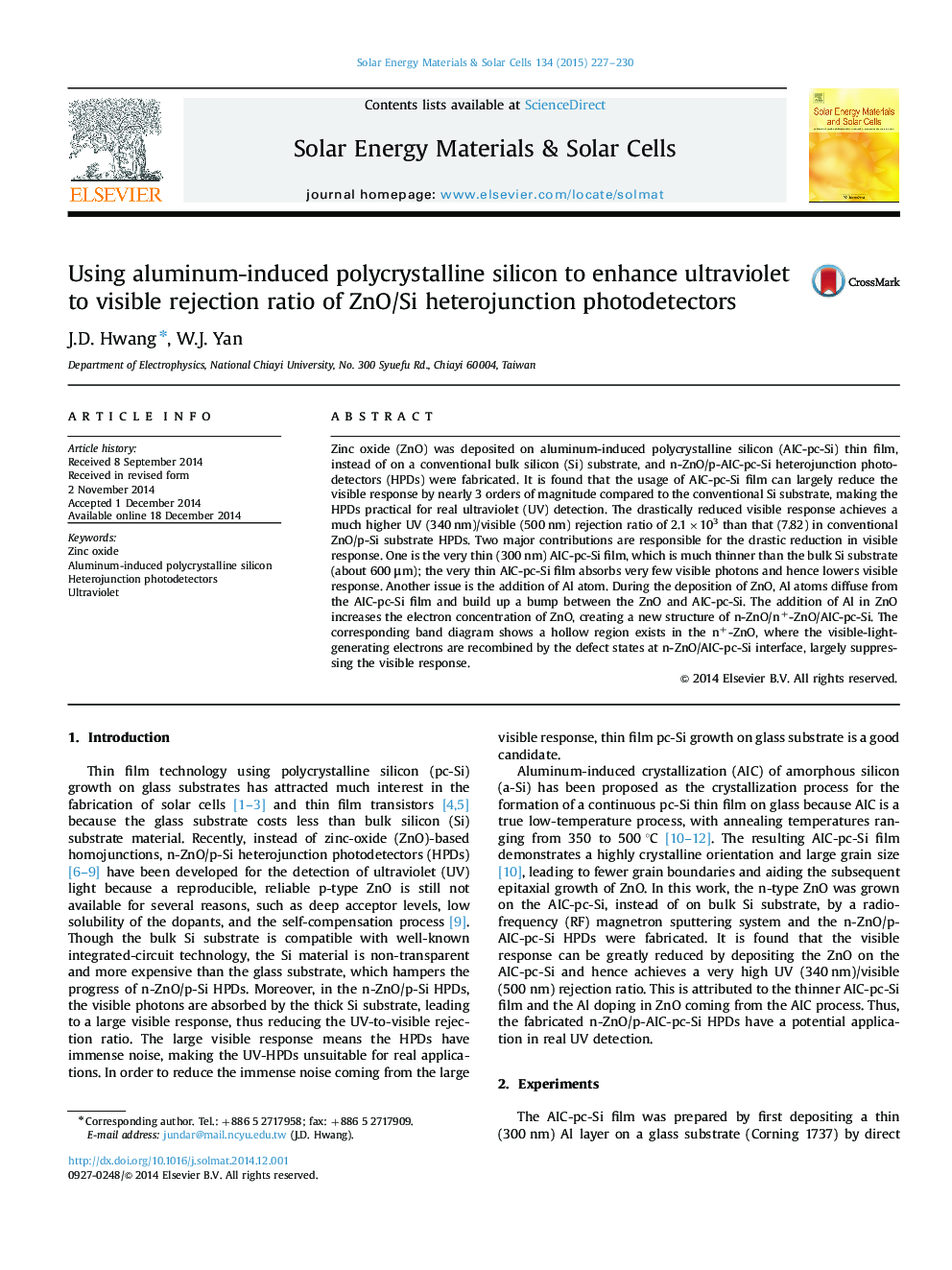| Article ID | Journal | Published Year | Pages | File Type |
|---|---|---|---|---|
| 77911 | Solar Energy Materials and Solar Cells | 2015 | 4 Pages |
•Zinc oxide (ZnO) is deposited on aluminum-induced polycrystalline silicon (AIC-pc-Si) thin film.•Ultraviolet (UV) n-ZnO/p-AIC-pc-Si heterojunction photodetectors (HPDs) are fabricated.•Obtaining a very high UV (340 nm)/visible (500 nm) rejection ratio of 2.1×103.•Two major contributions: very thin (300 nm) AIC-pc-Si film and Al addition in ZnO.
Zinc oxide (ZnO) was deposited on aluminum-induced polycrystalline silicon (AIC-pc-Si) thin film, instead of on a conventional bulk silicon (Si) substrate, and n-ZnO/p-AIC-pc-Si heterojunction photodetectors (HPDs) were fabricated. It is found that the usage of AIC-pc-Si film can largely reduce the visible response by nearly 3 orders of magnitude compared to the conventional Si substrate, making the HPDs practical for real ultraviolet (UV) detection. The drastically reduced visible response achieves a much higher UV (340 nm)/visible (500 nm) rejection ratio of 2.1×103 than that (7.82) in conventional ZnO/p-Si substrate HPDs. Two major contributions are responsible for the drastic reduction in visible response. One is the very thin (300 nm) AIC-pc-Si film, which is much thinner than the bulk Si substrate (about 600 μm); the very thin AIC-pc-Si film absorbs very few visible photons and hence lowers visible response. Another issue is the addition of Al atom. During the deposition of ZnO, Al atoms diffuse from the AIC-pc-Si film and build up a bump between the ZnO and AIC-pc-Si. The addition of Al in ZnO increases the electron concentration of ZnO, creating a new structure of n-ZnO/n+-ZnO/AIC-pc-Si. The corresponding band diagram shows a hollow region exists in the n+-ZnO, where the visible-light-generating electrons are recombined by the defect states at n-ZnO/AIC-pc-Si interface, largely suppressing the visible response.
Graphical abstractFigure optionsDownload full-size imageDownload as PowerPoint slide
